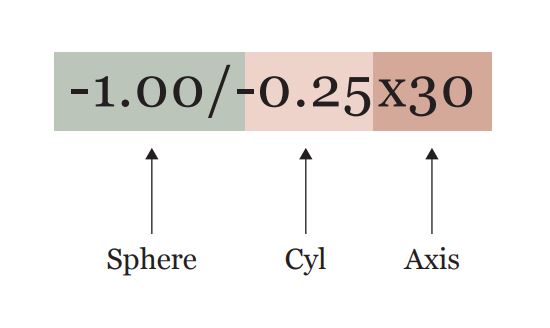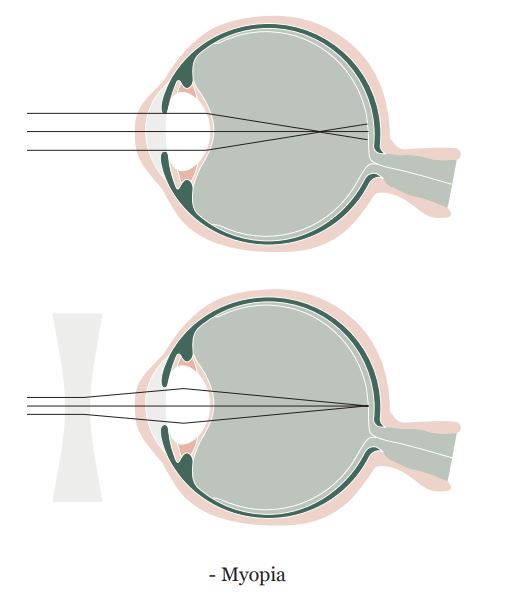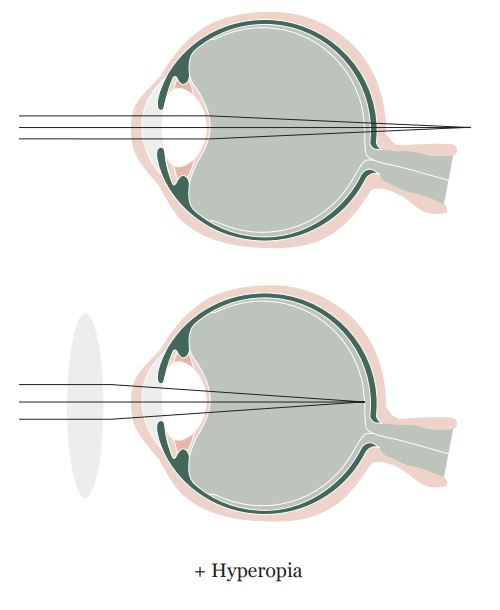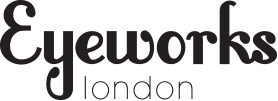Prescription

Sphere
The sphere is the name for the type of lens that corrects myopia and hyperopia

Myopia is also known as short sightedness
It is written with a minus prefix
Myopia causes more difficulty with distance vision
Myopia is corrected with a concave lens which is thinnest in the centre
In myopia the eye is too long or powerful and the light is focused in front of the retina
Hyperopia is also known as long sightedness
It is written with a plus prefix
Hyperopic eyes have more difficulty focusing on close objects
Hyperopia is corrected with a convex lens which is thickest in the centre
In hyperopia the eye is too weak or short and the light is focused behind the retina

Cyl
A cyl or cylinder is the name for the type of lens that corrects astigmatism. It takes its name from a cylinder shape that has a steep curve in one direction and a flat or flatter curve in the other.
Astigmatism occurs when the surface of the eye (cornea) or the lens behind it is not a
round shape, but oval like a rugby ball. This distorts the light entering the eye which does not focus correctly on the retina, and as a result the image is distorted or blurred.
Astigmatism can affect both the distance and reading vision

The axis is the direction of the astigmatism. It refers to thedirection of the flattest curve of the cylinder lens.
Visual acuity
Refers to the lowest line that can be read on the sight test
chart.
Example 6/12
The first number refers to the distance in meters that the sight test chart is viewed, this is usually at 6 meters. The second number refers to the size of the letters. The larger this second number then the larger the letters need to be to be viewed and the worse the vision is.

Add
The reading add is the additional spherical power that is added to the distance prescription in order to read comfortably.
Not everyone will need a reading add and it is generally only prescribed to over 40’s
Eye Health Summary
Pressure
High eye pressure is a risk factor for glaucoma. The pressure is measured in millimetres of mercury (mmHg).
Normal eye pressure is below 21mmHg. Pressures that are higher do not necessarily mean that glaucoma is present. Other tests are needed to confirm its presence.
Optic nerves
Assessing the optic nerve is part of a collection of tests that are needed to diagnose glaucoma.
The optic nerve can be viewed as a ring of nerve fibre with a central cup.
In glaucoma the nerve fibre will get progressively thinner while the cup will appear bigger. This is called cupping.




